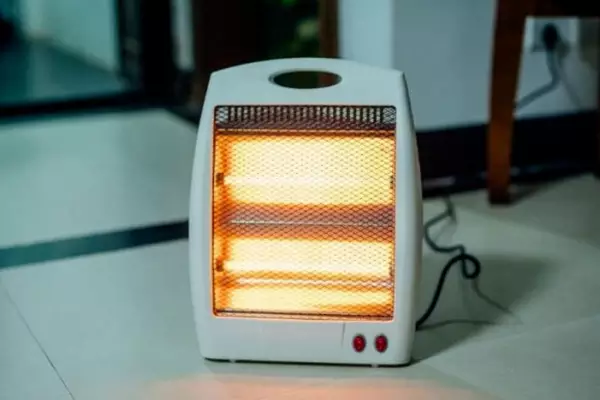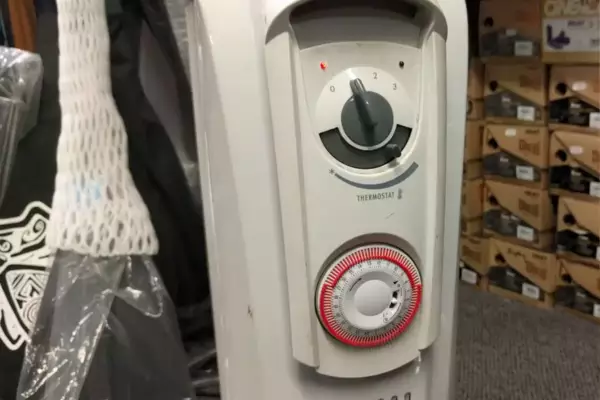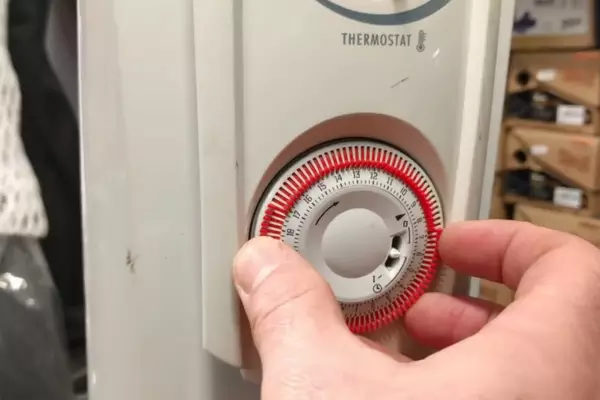Electric heaters offer a convenient and reliable method of heating up your home. They’re a popular choice among many homeowners due to their simplicity and affordability. Their functionality isn’t too complex, yet their impact can make a world of difference in the overall comfort of your living space.
At the heart of the matter, turning on an electric heater is about understanding the operation. Every heater model comes with different features and functionalities, and knowing how to utilize these features efficiently and safely can ensure a warm, comfortable home in the colder months.
Electric heaters, available in various forms such as fan heaters, oil-filled radiators, and convection heaters, have distinct operating procedures. Despite these differences, some common steps apply to all when it comes to their activation.
Contents
Safety First
Electric Heater Safety Measures
Before we dive into the mechanics of turning on an electric heater, let’s focus on safety. It’s crucial to keep the heater away from any flammable materials such as curtains, furniture, and clothing. Always ensure the heater is placed on a stable, level surface to prevent accidental tipping. For those with children or pets, a heater with a safety tip-over switch is a good choice.
Heater Location Considerations
The location of the heater significantly influences its efficiency. Avoid placing it near windows or doors where drafts can make it work harder. Placing the heater in a central location allows for more even heat distribution. Also, ensure the heater is not obstructing any passageways or exits.

Electric Heater Features
Thermostats Explained
Most electric heaters come equipped with a thermostat, which is a tool for regulating temperature. You can adjust the temperature to your preferred degree of warmth.
Timer Function
Some heaters have a timer function, allowing you to set the heater to turn on or off at specific times. This feature is handy for those who wish to have their home warmed up by the time they arrive.
Power Modes
Electric heaters often have different power modes, allowing you to choose the intensity of the heat output. These modes enable energy efficiency and help manage power consumption.
Heater Activation
Powering Up
Turning on your electric heater is typically a straightforward process. First, position the heater on a flat and stable surface, away from flammable items. Ensure the area is well-ventilated, and the heater is not in a confined or enclosed space.
After the heater is safely positioned, plug the heater cord into the electrical outlet. Make sure the plug fits securely into the outlet to ensure a stable power supply. If your heater has a power cord that can be disconnected from the unit, ensure both ends are firmly connected.
Now, locate the power switch on your heater. This is typically an easily identifiable button or switch marked with a universal power symbol or clearly labeled as “ON/OFF”. Depending on your specific heater model, you might need to flip the switch or press the button to power up the heater.
Setting the Temperature
Next, set your heater’s temperature. Most heaters are equipped with an adjustable thermostat to help you regulate the room temperature according to your personal comfort level. The thermostat usually has a dial or a digital panel that allows you to set the desired temperature.
The operation of the thermostat varies between heater models. In general, rotating the thermostat dial clockwise increases the heat setting, while rotating it counterclockwise decreases it. On heaters with a digital panel, you can press the up or down arrows or type in the desired temperature directly.
It’s worth noting that it might take a few minutes for the heater to reach the set temperature, especially in larger rooms or colder conditions. During this time, the heater will operate continuously. Once the desired temperature is achieved, the heater will cycle on and off to maintain the set temperature.
Using the Timer
If your heater has a timer function, it provides additional convenience and energy efficiency. You can program the heater to start and stop at specific times, allowing you to heat your home just when needed. This can be particularly helpful for warming up your home before you wake up in the morning or return from work in the evening.
To set the timer, locate the timer control on your heater. This could be a dial, a set of buttons, or a digital interface. Follow your heater’s specific instructions to set the timer. Typically, this involves selecting the start and end times for the heater operation.

Efficient Usage Tips
Heater Size and Room Size
The size of the heater and the size of the room it’s intended to heat are crucial factors in heating efficiency. Using a heater that is too small for a large room might result in insufficient heating, while using a large heater for a small room can lead to unnecessary energy consumption and overheating.
When selecting a heater, consider the size of the room. As a general rule, a room measuring 150 square feet would require a heater with an output of 1,500 watts. Always refer to the manufacturer’s guidelines when choosing the right size heater for your space.
Ideal Temperature Settings
Determining the ideal temperature setting for your heater is often a matter of personal preference. However, setting your heater to a comfortably low temperature can help save energy and prevent overheating.
Starting at a lower temperature setting and gradually increasing it until you find a comfortable level can be a practical approach. Remember that every degree above 20 degrees Celsius can add around 10% to your heating bill, so it’s wise to aim for a balance between comfort and energy efficiency.
Limiting Heat Loss
Preventing heat loss is key to maximizing the efficiency of your electric heater. There are several ways to limit heat loss in your home:
- Insulation: Properly insulating your home can significantly reduce heat loss. This includes insulating walls, ceilings, and floors and using draft excluders on doors and windows.
- Closing Doors and Windows: Keep doors and windows closed when the heater is operating to prevent warm air from escaping and cold air from entering.
- Using Curtains or Blinds: Thick curtains or blinds can provide an extra barrier to heat loss through windows.
Troubleshooting
Despite the best efforts, you might sometimes encounter issues with your electric heater. Here are some common problems and their potential solutions.
Not Turning On
If your heater does not turn on, there could be several causes:
- Power Supply: Check if the heater is properly plugged into the electrical outlet. Also, try a different outlet to rule out any issues with the power supply.
- Power Switch: Check the power switch or button on the heater. Ensure it’s in the ‘ON’ position.
- Thermostat Setting: If the thermostat is set too low, the heater might not turn on because the room temperature is already at or above the set temperature.
If you’ve checked these areas and the heater still won’t turn on, you might need professional assistance to diagnose and repair the problem.
Not Heating Up
If your heater turns on but doesn’t warm up the room, here are a few things to consider:
- Thermostat Setting: If the thermostat is set too low, increase the temperature setting.
- Room Size: If the heater is too small for the room size, it might struggle to heat the room effectively. In this case, you might need a larger heater.
- Heat Loss: If there is significant heat loss in the room due to drafts or poor insulation, the heater might not be able to maintain the desired temperature.
Automatic Shutdown
Most modern heaters come with a safety feature that automatically turns off the heater if it overheats. If your heater shuts down suddenly, it might have overheated. In this case, turn off the heater and unplug it. Allow it to cool down before attempting to turn it on again. If it continues to shut down, contact a professional for assistance.

Routine Maintenance
Maintaining your electric heater in good condition can extend its life and ensure efficient operation. Here are some maintenance tips:
Cleaning Procedures
Regular cleaning can prevent dust and dirt from accumulating in your heater, which could potentially cause overheating or fire hazards. Always unplug the heater before cleaning. Use a soft brush attachment on a vacuum cleaner to clean the vents or grills of the heater. Never use wet cloth or immerse the heater in water.
Regular Check-Ups
Regularly inspect your heater for any signs of wear and tear, such as damaged cords or plugs, broken controls, or unusual noises. If you notice any issues, contact a professional for repair or replacement.
When to Seek Professional Help
While basic maintenance and troubleshooting can often be done at home, some issues require professional assistance. If your heater repeatedly malfunctions, makes strange noises, emits an unusual smell, or shows signs of physical damage, it’s best to seek professional help. Trying to fix complex issues on your own could potentially lead to safety hazards.
Environmental Impact
Energy Efficiency of Electric Heaters
Despite their reputation, electric heaters can be energy efficient when used properly. Choosing a heater with a high energy rating can save on electricity bills.
Lowering Carbon Footprint
Using your electric heater responsibly can lower your carbon footprint. Optimizing usage and implementing energy-saving measures play a crucial role.
Frequently Asked Questions
Why isn’t my electric heater turning on?
There could be several reasons why your heater isn’t turning on. This could be due to a power issue, a blown fuse, or an internal malfunction. Always consult your user manual or contact a professional if unsure.
How can I increase the efficiency of my electric heater?
Ensuring your heater is in the right location, limiting heat loss in the room, and using the correct size heater for your space can enhance efficiency.
How often should I clean my electric heater?
This largely depends on the usage and the manufacturer’s guidelines. However, cleaning your heater once every few months is generally a good practice.
Conclusion
Operating an electric heater efficiently involves more than simply switching it on. It requires a basic understanding of the heater’s features and a commitment to safety.
Moreover, acknowledging the role of heaters in environmental sustainability is essential. Utilizing the heater in an efficient manner goes a long way in preserving energy and reducing carbon emissions.
In the end, it’s about striking a balance between comfort and sustainability, creating a warm and cozy home while being mindful of our energy consumption. With this information, you can now turn on and use your electric heater effectively and responsibly.

